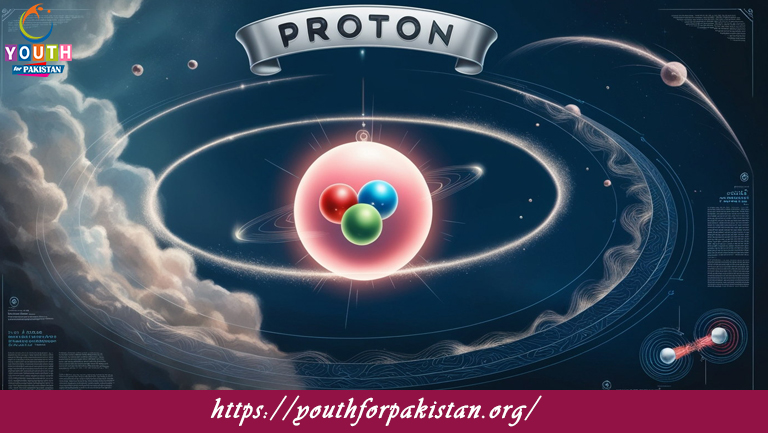Welcome to the Discovery And Properties Of Proton MDCAT MCQs with Answers. In this post, we have shared Discovery And Properties Of Proton Multiple Choice Questions and Answers for PMC MDCAT 2024. Each question in MDCAT Chemistry offers a chance to enhance your knowledge regarding Discovery And Properties Of Proton MCQs in this MDCAT Online Test.
Who is credited with the discovery of the proton?
a) Ernest Rutherford
b) J.J. Thomson
c) James Chadwick
d) Niels Bohr
What is the charge of a proton?
a) Negative
b) Positive
c) Neutral
d) Variable
The mass of a proton is approximately:
a) 1 atomic mass unit (amu)
b) 1/2 atomic mass unit (amu)
c) 1/4 atomic mass unit (amu)
d) 2 atomic mass units (amu)
What particle was discovered first, the proton or the neutron?
a) Proton
b) Neutron
c) Both were discovered simultaneously
d) None of the above
In which experiment was the existence of the proton first confirmed?
a) Gold foil experiment
b) Cathode ray tube experiment
c) Oil drop experiment
d) Rutherford’s experiment
What is the symbol for a proton in nuclear equations?
a) n
b) e⁺
c) p⁺
d) α
Which subatomic particle has a positive charge and is found in the nucleus?
a) Electron
b) Neutron
c) Proton
d) Positron
The proton is composed of smaller particles called:
a) Neutrons
b) Quarks
c) Electrons
d) Photons
The proton was discovered in which decade?
a) 1890s
b) 1900s
c) 1910s
d) 1920s
Who discovered the neutron shortly after the proton?
a) Ernest Rutherford
b) Niels Bohr
c) James Chadwick
d) Albert Einstein
Which type of experiment provided evidence for the existence of protons?
a) Spectroscopy
b) Particle collisions
c) Radioactive decay
d) Diffraction
What is the relative charge of a proton compared to an electron?
a) Equal in magnitude, opposite in sign
b) Double in magnitude, opposite in sign
c) Half in magnitude, same sign
d) Zero
In atomic nuclei, protons are held together with neutrons by:
a) Gravitational force
b) Electromagnetic force
c) Strong nuclear force
d) Weak nuclear force
The number of protons in an atom determines its:
a) Mass number
b) Atomic number
c) Isotope
d) Neutron number
What property of protons makes them positively charged?
a) Mass
b) Spin
c) Charge
d) Momentum
Protons are found in which part of the atom?
a) Electron cloud
b) Nucleus
c) Neutron shell
d) Photon ring
Which of the following particles is not found in the nucleus?
a) Proton
b) Neutron
c) Electron
d) None of the above
The discovery of the proton led to the development of which model of the atom?
a) Dalton’s model
b) Thomson’s model
c) Rutherford’s model
d) Bohr’s model
The discovery of protons helped explain:
a) Chemical bonding
b) Radioactivity
c) Atomic structure
d) Quantum mechanics
How does the mass of a proton compare to the mass of a neutron?
a) Proton is heavier
b) Neutron is heavier
c) They have the same mass
d) Proton is lighter
The concept of protons was introduced to explain:
a) Chemical properties of elements
b) Electron orbits
c) Nuclear reactions
d) Neutron stability
What is the primary force that binds protons and neutrons in the nucleus?
a) Electromagnetic force
b) Gravitational force
c) Strong nuclear force
d) Weak nuclear force
The discovery of protons was crucial for understanding:
a) Quantum theory
b) Atomic mass
c) Periodic table
d) Atomic number
The proton’s positive charge is equal in magnitude to the electron’s:
a) Positive charge
b) Negative charge
c) Neutral charge
d) Uncertain charge
In which experiment did Rutherford discover the proton?
a) Oil drop experiment
b) Gold foil experiment
c) Cathode ray experiment
d) Photoelectric effect
What is the approximate mass of a proton in kilograms?
a) 1.67 × 10⁻²⁷ kg
b) 1.67 × 10⁻²⁸ kg
c) 1.67 × 10⁻²⁶ kg
d) 1.67 × 10⁻²⁹ kg
What is the charge of a proton in coulombs?
a) +1.6 × 10⁻¹⁹ C
b) -1.6 × 10⁻¹⁹ C
c) +3.2 × 10⁻¹⁹ C
d) -3.2 × 10⁻¹⁹ C
The number of protons in an atom is equal to the number of:
a) Neutrons
b) Electrons
c) Isotopes
d) Nucleons
The proton is made up of:
a) Electrons
b) Neutrons
c) Quarks
d) Photons
The proton’s charge is:
a) +1 elementary charge
b) -1 elementary charge
c) +2 elementary charges
d) -2 elementary charges
In the hydrogen atom, the proton is located in the:
a) Electron cloud
b) Proton cloud
c) Nucleus
d) Outer shell
The stability of the proton is attributed to:
a) Gravitational force
b) Electromagnetic force
c) Strong nuclear force
d) Weak nuclear force
In which type of particle accelerator can protons be observed?
a) Cyclotron
b) Linear accelerator
c) Synchrotron
d) All of the above
Which property of the proton helps to determine the atomic number of an element?
a) Charge
b) Mass
c) Spin
d) Energy
The discovery of protons contributed to the development of:
a) Quantum mechanics
b) Nuclear physics
c) Organic chemistry
d) Thermodynamics
The proton’s spin quantum number is:
a) 0
b) +1/2
c) -1/2
d) +1
The proton’s stability is due to:
a) Electromagnetic interactions
b) Strong nuclear interactions
c) Gravitational interactions
d) Weak nuclear interactions
Protons in the nucleus are arranged in a way to:
a) Maximize repulsive forces
b) Minimize nuclear stability
c) Balance electrostatic forces
d) Minimize nuclear forces
The number of protons in an atom is equal to the number of:
a) Neutrons
b) Electrons
c) Isotopes
d) Nucleons
The discovery of the proton helped explain the concept of:
a) Atomic mass
b) Atomic number
c) Isotopic variations
d) Quantum states
If you are interested to enhance your knowledge regarding Physics, Chemistry, Computer, and Biology please click on the link of each category, you will be redirected to dedicated website for each category.








